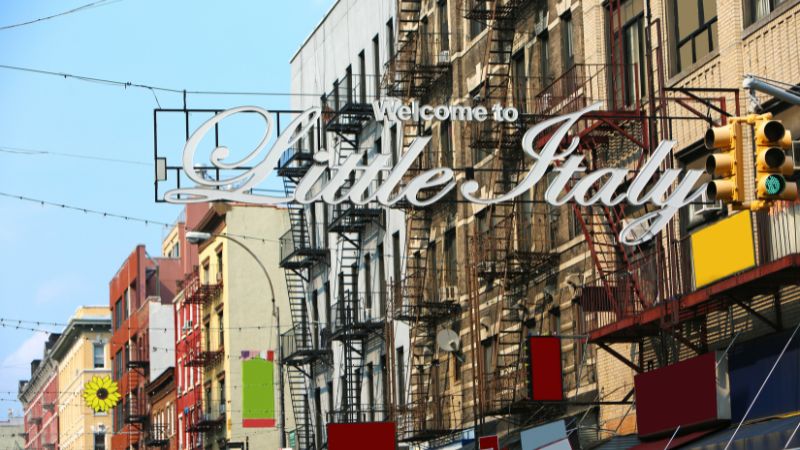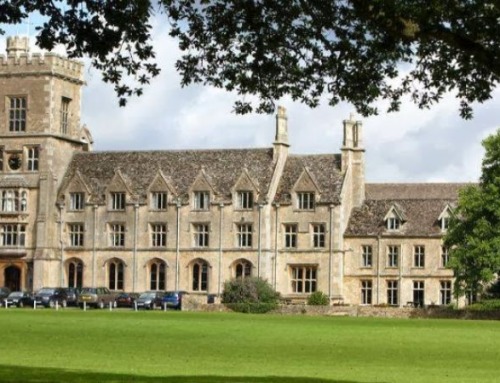In the late 1800s, Italian immigrants began carving out a space for themselves in Lower Manhattan. Nestled between Canal and Houston Streets, Little Italy became a vibrant symbol of their culture and traditions.
Even though the neighborhood has become smaller over time, Little Italy’s heartbeat is still strong, if you know where to look.
Walking through Little Italy feels like stepping into a different rhythm of life. The neighborhood has held on to its charm, making it the perfect place to experience authentic Italian cuisine, historic cafes, and a sense of nostalgia that lives in every corner.
From the scent of espresso to the sweet crunch of a freshly made cannolo, visiting Little Italy is a full-on sensory experience.
As you wander past checkered tablecloths and vintage shopfronts, you’ll feel like you’re part of an old movie, complete with Frank Sinatra playing in the background and laughter echoing from café patios.
La storia di Little Italy
Before it became a cultural landmark, the area we now know as Little Italy belonged to the Lenape tribes and Dutch settlers.
Then came the wave of Italian immigration. Drawn by industrial opportunities, many Italians arrived between 1860 and 1880—nearly 68,000 in that period alone. They settled in what would become Little Italy and expanded north to East Harlem.
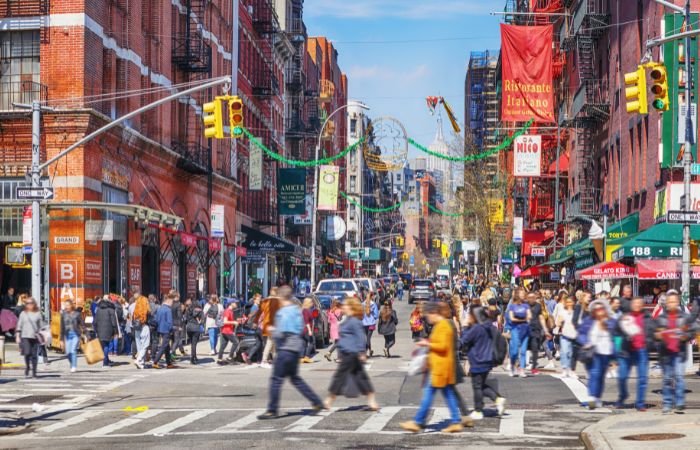
By the 1920s, more than 390,000 Italians had made The Big Apple their home. Each corner of the neighborhood echoed with the sounds of different regions: Sicilians gathered on Elizabeth Street, Genovese families met on Baxter Street, and northern Italians made their home around Bleecker Street.
The result? A lively mix of languages, scents, and regional cuisines that made every stroll through the area feel like a trip across Italy.
What to See in Little Italy Today
Little Italy once stretched across 50 city blocks. Today, it’s condensed into three colorful blocks along Mulberry Street, between Broome and Canal.
Despite its smaller footprint, it hasn’t lost its soul.
You’ll spot murals in the colors of the Italian flag, shop windows brimming with cured meats and aged cheeses, and restaurants where every dish carries a piece of family history.
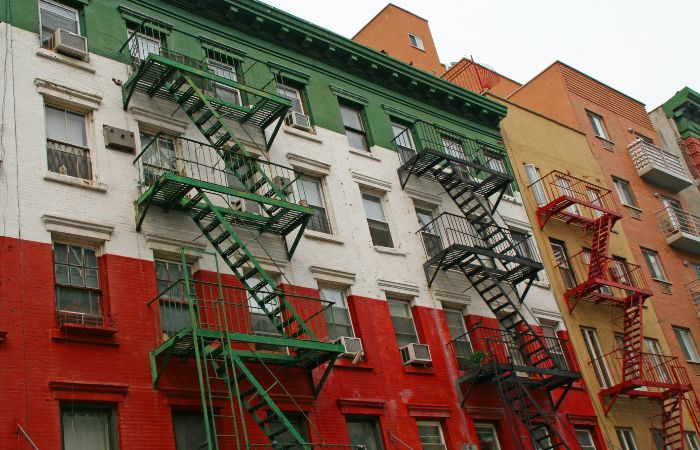
Mafia history and movie sets
If you’re curious about Little Italy’s ties to American mafia history, there are a few iconic spots you’ll want to check out.
The Ravenite Social Club, once frequented by mob boss John Gotti in the late 1980s, has since become a men’s clothing store. But the stories still linger in the walls.
Umbertos Clam House is where mobster Joe “Crazy Joe” Gallo was gunned down during his 43rd birthday dinner in 1972. The restaurant is still open today.
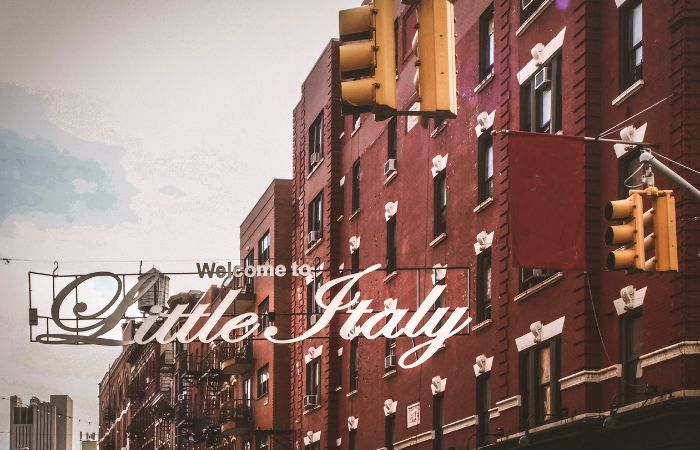
Movie buffs will recognize many Little Italy landmarks from gangster films.
Take The Godfather, for example. The iconic scene where Don Corleone is nearly assassinated outside a fruit stand? That was filmed at 137 Mott Street. Today, it’s a Chinese pharmacy—but in the 1972 film, it played a key role.
In The Godfather Part II, the San Gennaro procession sets the scene for young Vito Corleone’s revenge on local mobster Don Fanucci.
And if you’re a fan of The Sopranos, you’ll recognize the Mulberry Street Bar, which served as the stand-in for the Averna Social Club—hangout of the fictional Lupertazzi family.
The owners of the bar proudly display newspaper clippings and photos of the show in their front window.
Mulberry Street
This is the main artery of Little Italy.
Cafés, shops, and restaurants line the street, bringing life and energy to every block. The street is busy and full of people, but that’s part of what makes it special.
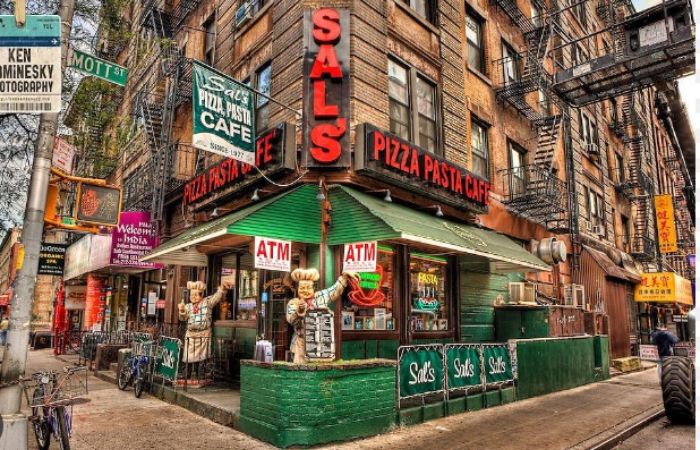
Grab a coffee. Share a slice of pizza. Listen to the buzz of conversations.
Keep walking south and you’ll slowly step into Chinatown—a smooth shift from Italian to Chinese culture that shows how layered and rich this part of New York really is.
Audrey Hepburn’s Famous Mural
Little Italy is home to one of the city’s most loved murals.
At the corner of Broome Street and Mulberry Street, you’ll find a striking image of Audrey Hepburn as Holly Golightly from the 1961 film Breakfast at Tiffany’s.
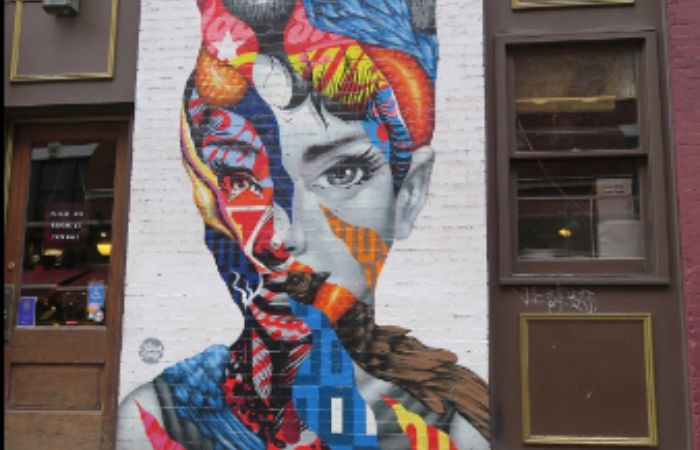
Painted in 2013 by world-renowned artist Tristan Eaton, it’s become one of the most popular photo spots in the neighborhood.
It’s bold, bright, and unforgettable, just like Little Italy itself.
Ferrara Bakery and that famous cannolo
If there’s one thing you can’t leave Little Italy without tasting, it’s a cannolo from Ferrara Bakery.
Locals and tourists agree—this is where you’ll find the best in town. The line outside speaks for itself.
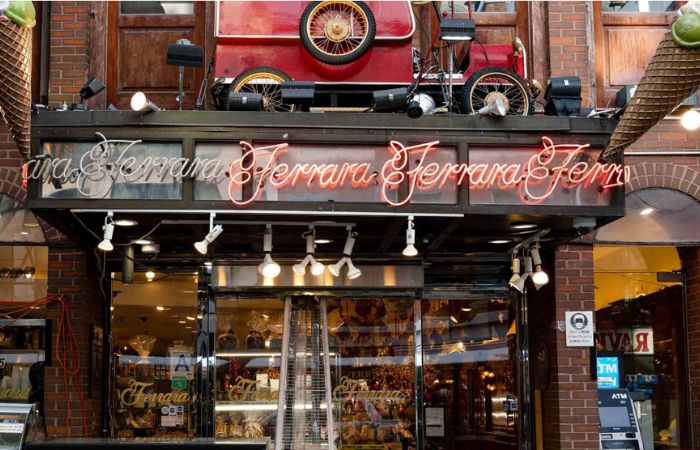
Opened in 1892, Ferrara has been family-run for over 130 years. It’s more than a bakery. It’s a piece of history.
Their menu includes more than 200 Italian treats, from creamy gelato and buttery cookies to espresso, cakes, and even savory dishes like lasagna.
But it’s the cannoli that keep people coming back.
Pizza at Lombardi’s
If pizza is more your thing, you’ll want to stop at Lombardi’s—the first pizzeria in the United States.
They opened in 1905, and they still use the stone oven that Gennaro Lombardi brought to New York from Naples.
Their website proudly claims the title of “first pizza,” and the flavor backs it up.
If you’re planning to keep going, head across the river to Brooklyn’s Grimaldi’s, which traces its roots back to Lombardi himself.
The San Gennaro Festival
When September rolls around, Little Italy transforms for the Feast of San Gennaro.
It’s more than a street fair. It’s a living expression of faith, food, and tradition.
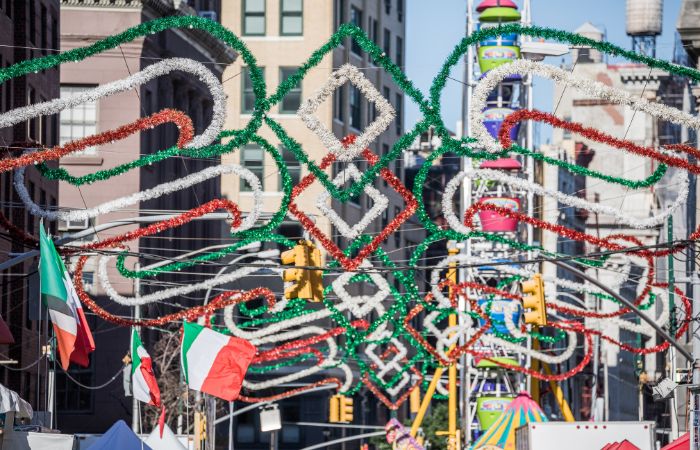
Music fills the air. Vendors sell sausage sandwiches and fried dough. And the neighborhood celebrates its connection to San Gennaro, Naples’ patron saint, who died a martyr.
The festival has been bringing the community together for nearly 100 years. If you’re in New York in September, this is something you don’t want to miss.
Church of the Most Precious Blood
Start your San Gennaro experience here.
The Church of the Most Precious Blood is where the festival begins—and where much of its spirit lives year-round.
Even if you’re visiting outside festival dates, the church is worth your time.
Inside, you’ll find a historic pipe organ by Henry Erben, installed just after the Civil War. It’s a work of art in its own right.
St. Patrick Old Cathedral
Just a few blocks away is St. Patrick’s Old Cathedral.
Built in 1815 and designed by Joseph-François Mangin, this is one of New York’s oldest Catholic churches.
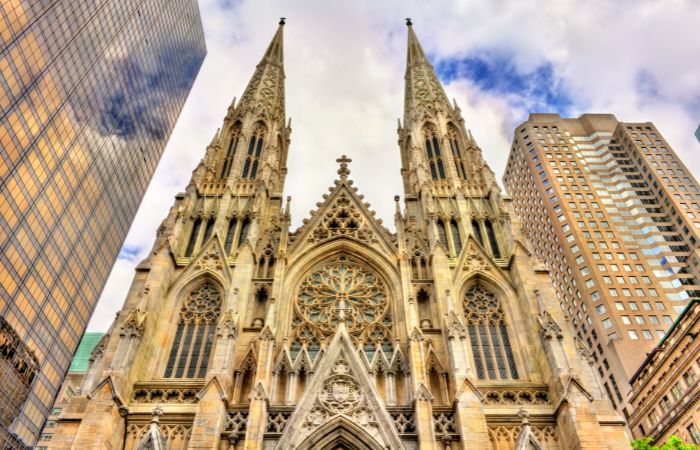
It was the city’s original cathedral before the larger St. Patrick’s on Fifth Avenue was completed.
In 1966, it was named a historic landmark, and with its dramatic Gothic Revival architecture, it’s easy to see why.
Plan Your Visit with Astrolabio
If you’re planning a trip to New York, make sure Little Italy is part of it.
Want something more than a typical tourist experience? We can help.
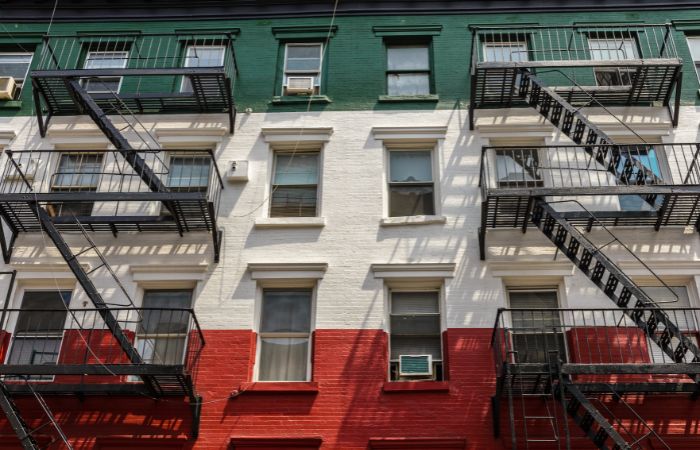
Our travel designers are here to create a custom itinerary that fits you perfectly. We’ll help you discover hidden spots, iconic landmarks, and flavors that you’ll remember long after the trip is over.
Little Italy is more than a neighborhood. It’s a story. And you get to be part of it.

